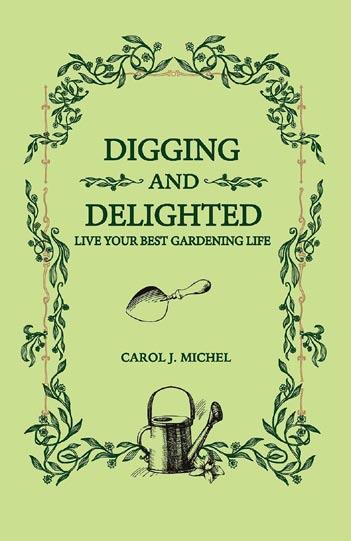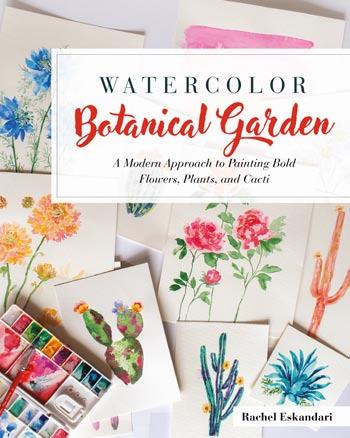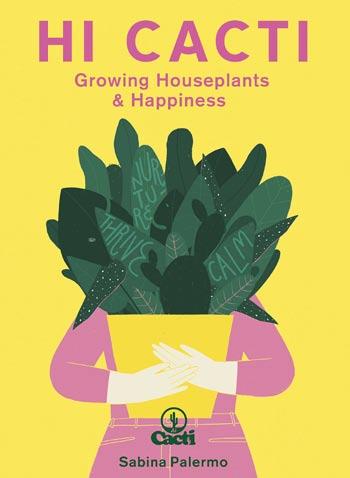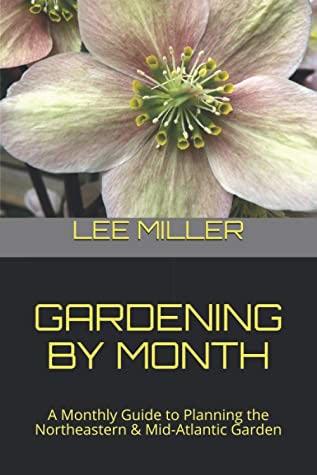
16 minute read
BOOKreviews
Digging and Delighted: Live Your Best Gardening Life Authors: Carol J. Michel Publisher: Gardenangelist Books List Price: $14.99 Order Link: https://amzn.to/2Zha1S1 Reviewer: Charlotte Crook Carol J. Michel’s book of essays, Digging and Delighted is an easy, yet engaging read, with a conversational blend of warm humor and encouragement for gardeners of all skill levels. The reader immediately gets a sense of who the author is. Michel wants you to think of her as “your eccentric gardening aunt,” who will guide you to becoming a great gardener. In reading her latest book of humor essays, the comparison holds true.
Digging and Delighted, released in August 2021, is a shame-free, lighthearted book of advice that will get you through a hard day in the garden—or just give you a laugh. Michel provides every gardener, regardless of their level of experience and resources, with advice to reach their fullest potential. This book will help you, as Michel puts it, “Live your best gardening life!” Although Michel is from Indiana, her book is purposefully adaptable to all gardeners. She encourages her audience to find local resources, experiment, and start from a place that feels suited to their comfort level. She emphasizes building a community out of gardening and how much fun it can be to be a part of, while sprinkling in humor and anecdotes that light up the pages. Michel makes it a point that her book is meant to be a take-it-anywhere type of read. Essays you can read a few pages of, set down, and then come back to later. If that’s not your style, the essays are still cohesive and make sense in one read-through. This book is helpful and informational but not overly scientific. It is digestible, easy to understand in a way that is always engaging. Chapter 6, for instance, outlines different types of plants (annuals, perennials, etc.), but would not be confusing for a casual reader or a novice gardener. You feel as if you are chatting with an old friend. You may even laugh out loud, more than once. Especially relatable is Chapter 8’s rant about yellow daylilies. Michel is nonjudgmental in her essays. Her anecdotes are unafraid to go into mistakes she’s made as an experienced gardener; for instance, forgetting to check her garden for a few days, only to find that her ripe pawpaw fruit had been eaten. Stories and details like this make the reader comfortable in their abilities. It stresses that this is a book that anyone can read and anyone can learn something from.
Digging and Delighted is best summarized by a quote from the book’s last essay: “There is no perfect weather, soil, location, plants, or gardener. Garden anyway.” o
Charlotte Crook is a senior journalism major minoring in history at the University of Maryland, College Park, MD. She is an intern this fall with Washington Gardener and is passionate about raising house plants (to varying degrees of success).
Garden Allies: The Insects, Birds, & Other Animals That Keep Your Garden Beautiful and Thriving Author: Frederique Lavoipierre Publisher: Timber Press List Price: $24.95 Order Link: https://amzn.to/3AY5kcH Reviewer: Stacey Evers In Garden Allies, Frederique Lavoipierre adds her voice to the crescendoing chorus calling for holistic approaches to gardening that work with nature instead of against it. What makes this book different, though, is its singular focus on the living organisms that can help you—if you’ll let them—and the superb organization of the content. Insects dominate Garden Allies’ pages, but Lavoipierre is thorough in her coverage of who’s working with you in the garden. Her attention moves from the ground up, starting with underground organisms and closing with birds and bats. In addition to bees, butterflies, beetles, and bugs, she devotes sections to spiders, centipedes, galls, and even pathogens. The chapters, arranged by biological categories, are further subdivided to focus on specific species. For instance, “The Garden Commons” includes separate pieces on cicadas, damsel and dragonflies, crickets and grasshoppers, praying mantises, lacewings, and ants. For each type of ally, Lavoipierre covers identifying features, habits, habitat needs, cultural context, and tips on how to attract them. The term for what Lavoipierre is promoting is “biological control,” or allowing natural predators, parasites, and herbivores to manage the pests in your garden. Even so, she doesn’t completely rule out pesticides—sometimes they’re needed, she says, such as for massive infestations on your high-value plants. But even then, she favors taking action first with a powerful spray from the garden hose before reaching for a bottle of chemicals.

Garden insects and their relationships with each other and with the landscape have entranced Lavoipierre since she was a little girl. As an adult, she studied horticulture and biology, founded the Sustainable Landscape Professional Certification Program at Sonoma State University in California, and wrote a series of “Garden Allies” articles for a decade for Pacific Horticulture Magazine. She serves on the American Public Gardens Association’s editorial advisory group. You can read Garden Allies in any order, picking a species that interests you. The individual essays are easy and enjoyable to read, and the author packs a lot of information into a few pages. You can also use this book purely as a reference guide, since Lavoipierre has included a supremely useful 12-page index and several pages of additional resources. But I recommend starting with the opening chapters and then the epilogue, “Gardening Matters,” so you can understand Lavoipierre’s deeper and more meaningful message about sustainable landscaping. “As our population grows, and concerns about pollinators and environmental health grow, strictly ornamental gardens kept pest-free with chemicals are increasingly out of favor and indeed out of step with the times,” she writes. By practicing biological control instead, gardeners can not just regulate the population of pest insects, but also have a substantial impact on their local ecosystem. o
Stacey Evers is a garden educator and the director of Grow a Row FC, a Northern Virginia community initiative supporting gardeners who grow food for donation.
Winterland: Create a Beautiful Garden for Every Season Author: Cathy Rees Publisher: Princeton Architectural Press List Price: $30.00 Order Link: https://amzn.to/3jlJwBH Reviewer: Jim Dronenburg This book starts off in the introduction describing itself as a design book. You can take “every season” with a bit of explanation. The author lives in Maine, where, in her own words, the winters are “seven months long”. And there is 155, with the snow half melted and a group of three spring magnolias pruned into a single dome of canopy up at the top, against an evergreen background. Anyone with more than a patio could do this. The text is admirably organized and plain-speaking, and the points Rees makes are easy to follow, and seem reasonably uncomplicated to put into practice. She doesn’t say “plant this specific plant” or “isn’t this a lovely picture,” which comes as a relief. But some of the photo captions, while trying to make a design point, also show uses for specific plants or groups of plants, which have already solved two problems for your reviewer. In short, if you have any garden at all, you will want to get this book. And if you have a view of a neighbor’s garden, you need to give them this book. (After you read it first). o

snow. Therefore, she says, plant things that are good in the spring, summer or fall, but which also have winter interest. Granted, we in the DC area don’t have a seven-month winter; some of our best flowers actually bloom all the way through the time that Maine is in the deep freeze. But that said, our winters are long enough that “plant things for winter interest as well as summer duty” makes abundant sense. Design book, remember? The book’s areas are Design, Contrast, Embellish (lighting, ornament, structures, stone), Care, and Share (bringing outdoors in, getting out in winter, gardening for the birds, and creating habitat). The book’s suggestions will work for small places as well as large, the more so because our more-typical-DC-smallspaces have to do all-year duty. A lot of the book deals with what we would call “the bones” here—those things that appear or come to the fore when the leaves have fallen. Even hardscape is viewed differently when it is part of a winter composition. Viewing—ah, the pictures! The photos are by Lisa Looke, and document everything from large areas to tiny spaces. They all are beautiful, wonderful, and entirely illustrative of the points being made. This book has lots of text and illustrations, but your reviewer could recommend it for the photos alone. Some of the pictures show far more snow than this region usually gets, but the principles remain the same: form, texture, color, for both our regions. There is one haunting picture on page
Jim Dronenburg is a retired accountant and now gardens full-time in Knoxville, MD.
Watercolor Botanical Garden: A Modern Approach to Painting Bold Flowers, Plants, and Cacti Author: Rachel Eskandari Publisher: Rocky Nook List Price: $24.95 Order Link: https://amzn.to/3vuWaTW Reviewer: Melena DiNenna Watercolor Botanical Garden by Rachel Eskandari provides a step-bystep process for planning, stocking up on supplies, practicing, and getting to work on your watercolor creations. With her guidance, you can find your niche, learn about beautiful plants, and surprise yourself with what you’re capable of. The book is best for those who learn well from reading and looking at pictures—if you’re someone who needs to watch a video or take a class to follow along, you might find it a little more difficult to rely solely on the book for your painting. Eskandari’s book is a walkthrough of a variety of plant paintings that helps you get started and keep going. She teaches readers what supplies are best for watercolor painting, what techniques they should practice, and how to recreate some of nature’s most beautiful and interesting flowers and cacti on paper.

If you’re not sure what paints, brushes, paper, and other materials to buy, Eskandari gives the names and brands of the products she uses in the paintings featured in the book. However, she also says that readers can use whatever they’re comfortable with. Splurging is not necessary, especially for beginners. After covering materials, Eskandari helps you improve your technique. She discusses things like how to hold a paint brush, paint-to-water ratio, and using white space to create definition. After covering techniques, she walks you through the step-by-step process of painting 26 different flowers and cacti, ranging from the “dainty” wax flower to the “spindly” San Pedro cactus. She also includes pictures to show what each step of the process should look like. And throughout many of the paintings, she breaks up the process with helpful exercises—such as “petal practice”—to hone the techniques to create each plant’s unique shape, color, and dimension. Eskandari includes her own story about how painting has always been a part of her life. She tells readers that it’s okay—and actually “beautiful”—to be different and to embrace your own artistic side rather than copy someone else’s. She encourages readers not to feel confined to reproducing her art, but rather to mix it up and make it your own. Whether you’re a novice or a professional painter or somewhere in between who likes step-by-step guide books, it’s likely you’ll be able to find Watercolor Botanical Garden helpful for your artistic journey. o
Melena DiNenna is a journalism student at the University of Maryland, College Park, with minors in Spanish and sustainability studies. She is from Salisbury, MD, and is interning this fall with Washington Gardener.
Hi Cacti: Growing Houseplants & Happiness Author: Sabina Palermo Publisher: Leaping Hare Press List Price: $16.99 Order Link: https://amzn.to/3nsfZHM Reviewer: Melinda Thompson If you’re a gardener who wants to learn how to combine caring for houseplants, self-care, and mental health, then Hi Cacti: Growing Houseplants & Happiness by Sabina Palermo is the book for you. There are five chapters in this book: care instructions, plant hacks, creative projects, ways to cook houseplants, and plant design. This book is a comprehensive guide that provides the necessary light, air type, and amount of watering the houseplants need. It’s organized by the amount of the plant’s light: low, medium, and sun-loving. This guide is great for beginning gardeners to learn the basics. Next to each guide, there’s a blurb about what you can learn from this plant to help your mental health and to ground yourself. This way of learning through your plants can be a new process for all levels of experience. When talking about the heart-leaf philodendron, Palermo talked about the protective sheath to protect the baby leaves. The self-care advice to the reader says, “This little mindful act is also a relaxing moment in which to engage with nature and give yourself a boost.” The plant hacks include both tips for caring for the plants and tips for caring for the self. Palermo includes a guided
Note: These book reviews include links to Amazon.com for ordering them. Washington Gardener Magazine may receive a few cents from each order placed after you click on these links. root to rise meditation by Lol Swift where you follow your gaze across the plant, and use the philosophy of plants reaching from the ground and to the earth to guide your meditation. Plant care hacks include how to prevent overwatering, caring for plants with pests and disease, types of houseplants that you could grow together with these plants, and plant propagation techniques. Along with how to care for the plants, there is a chapter about crafts and activities that use plants. This is almost a recipe-like guide about plant design elements. It includes homemade plant feed, make-your-own moss poles, a macrame plant hanger, and more. It details everything you would need for the project, the method of how to put it together, and ways that you can connect with nature while making these projects. The next chapter gives recipes for foods and drinks you can make with your houseplants. Some of the highlights include cactus tacos and a variety of botanical drinks. Just like the crafts, this section describes the necessary plants and tools, and then a list of the methods for the projects. The last chapter lists fun options of how to design plants in your house. It gives creative ideas about pots, like canning your cacti in tin cans—after adding draining holes, of course, and shelves with an array of plants and other knick-knacks alongside them. For you crystal-lovers, there’s a list of

crystals that are beneficial to the plant and to you. Sabina Palermo ends the book with a great mantra: “Nature reminds us to stand tall and to nurture ourselves and each other—not just to survive but to thrive.” o
Melinda Thompson is a senior journalism major at the University of Maryland, College Park, MD, with a vocal performance minor and a concentration in women’s studies. She is an intern this fall with Washington Gardener.
Gardening by Month: A Monthly Guide to Planning the Northeastern & MidAtlantic Garden Author: Lee Miller Publisher: landscapedesignbylee.com List Price: $29.96 Order Link: landscapedesignbylee.com Reviewer: Charlotte Benedetto Laced with heady and seductive photography, practical expert Lee Miller’s Gardening By Month crafts your framework for four-season splendor in the Mid-Atlantic garden. The first thing deer-weary local area gardeners will love about Gardening By Month is that the author did not, as nearly all plant guides do, list plants like heuchera, astilbe, and prickly pear as “deer-resistant.” I knew immediately Miller is a writer with genuine Mid-Atlantic garden dirt under the nails. Miller selected species based on real-life experiences, not landscaper preferences, fluffy internet articles, or university lists. To my delight, Miller only designates plants as deer-resistant if they show rigor and beauty in a truly high-deer-pressure milieu. If you select any entry in Gardening By Month, it is plain that Miller has intimate and primary knowledge of the best practices and species for the Mid-Atlantic garden.
This is a family album of herbaceous winners organized by season. Each plant is featured at its greatest beauty and each profile tells us everything we need to know about an available, versatile, absolutely growable species specifically selected for the Mid-Atlantic. Readers will never find themselves mystified or bewildered by the choice of variety or species—each one is a perfect fit. These are the notes of a veteran of many garden tours, not those of a nursery grower, botanical collector, or online theoretician. But these varieties are not tired old work-horses, either. Miller has knowledge of not only rigorous species, but plants in popular colors, shapes, and sizes. Pearls of wisdom are seeded into every entry. The book is bursting with facts about animals, co-planting, maintenance, and installation. Not one to rely on tired, oft-repeated lore, nor to spurn invasives, Miller presents a garden that is practical and personable, and full of accessible beauty. These are plants a DC-area gardener can definitely grow; cultivars and varieties you can actually find. This is not, like so many volumes, a glittery list of impossible-togrow, out-of-zone exotics that leaves you wondering where you’d even buy such a plant, much less grow it. Miller’s petite volume is an easy-tonavigate guide organized around the months in a traditional format that allows for casual dreaming and photo flipping, as well as more-advanced planning along the calendar. I love the highcontrast, handy pictograms that accompany each entry—carefully designed, clever logos that provide an instant read on which entries are pollinator plants and bird-friendly species. If you’re like me, your garden dreams run year-round. It’s so easy to be distracted by the glories and difficulties of a current season. The calendaric chapters in Gardening By Month unfold in a natural fashion, and flipping into the future was a great way to remind me that despite autumn’s current splendor—the “bones of the garden,” as Miller calls them—will be laid bare in a scant few weeks. This chronological organization lets each species be featured at its showiest, most enchanting state, creating an excellent planning and inspirational guide. Accompanied by fantastic, copious, and generous full-color photographs (on every page!), this book creates an engaging, personable conversation with the reader. We find ourselves scooting forward and backward in time as planning takes over. Any Mid-Atlantic gardener would be captivated and find useful information in this glossy, perfectly formed little volume. Concise, but substantial, Gardening By Month is full of useful facts from a master of the domesticated wild. It is both practical in text and gem-like in presentation, and I think it has a place on the shelf of any local gardener. o

Charlotte Benedetto is a writer, artist, and gardener living in Great Falls, VA. She is enrolled in the Northern Virginia Community College horticulture program and is an intern this fall with Washington Gardener.

Love Reading?
These books were reviewed by volunteer members of the Washington Gardener Reader Panel. To join the Washington Gardener Volunteer Reader Panel, send an email with your name and address to: KathyJentz@gmail. com. We look forward to having you be a vital part of our local publication and its gardening mission. o Your Ad Here
Contact kathyjentz@gmail.com or call 301.588.6894 for ad rates. The ad deadline is the 10th of each month. Please submit your ad directly to: KathyJentz@gmail.com.









